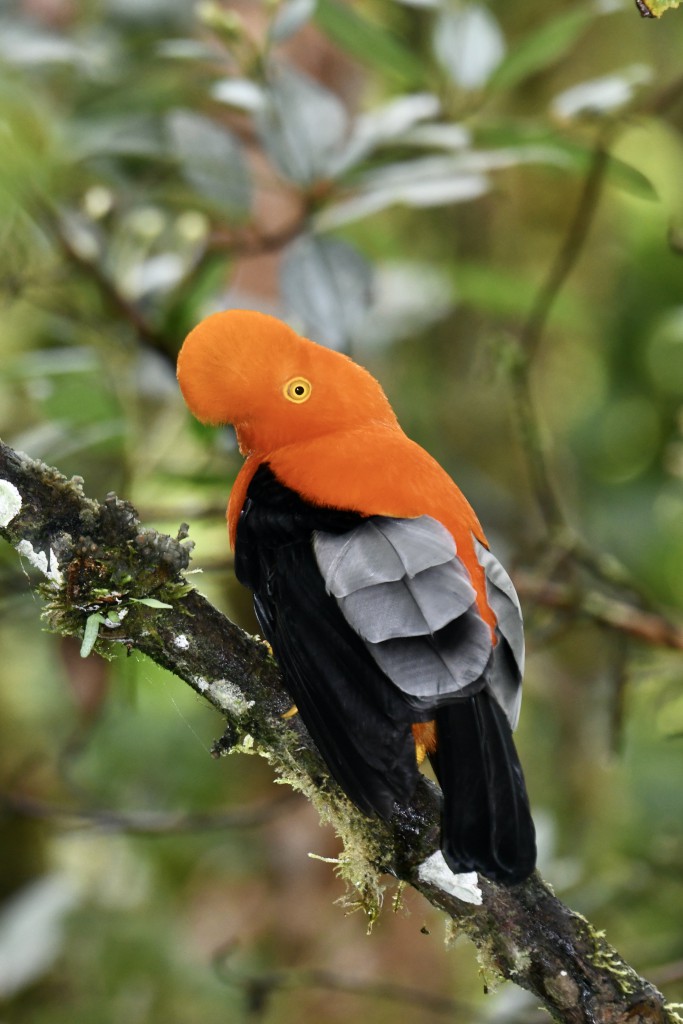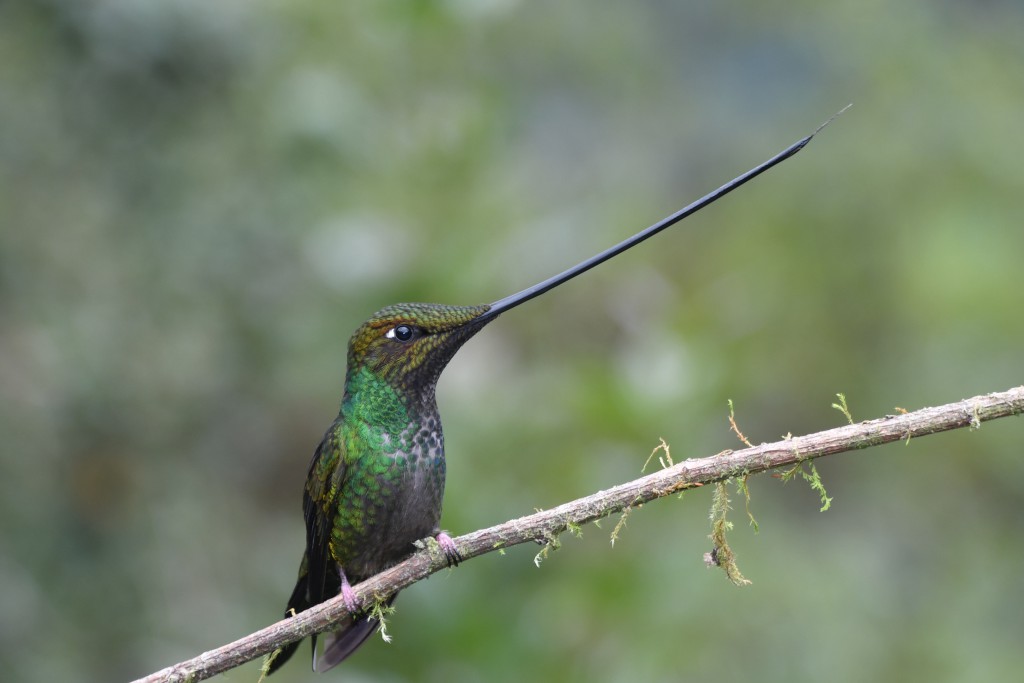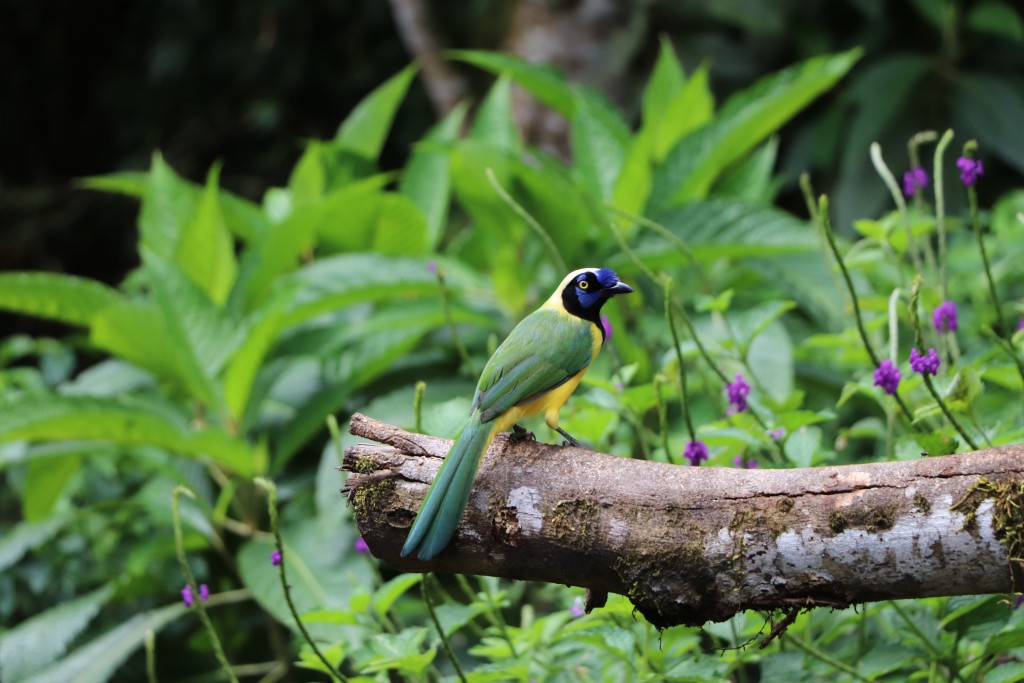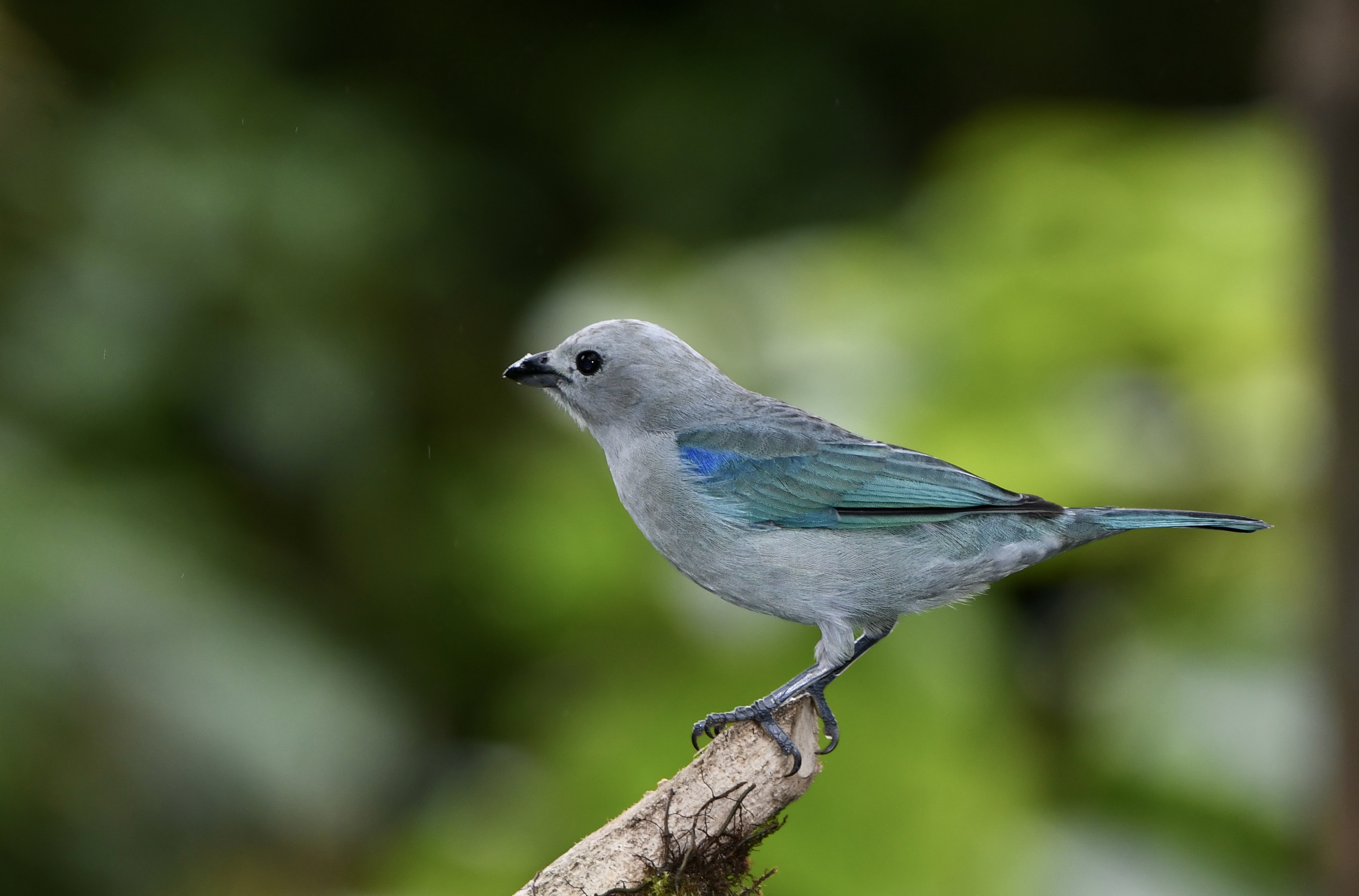Base off the species diversity, the best places to see birds in Ecuador are top ten bird hotspots with up to 1742 sp. make a serious progress with your life list. Bird watching tours, the perfect bird journeys essentially covering all corners of this country of Ecuador and allow you to enjoy a range of spectacular birds and wildlife. Ecuador Birds Tour.com has the perfect group of local bird guides, a team of professionals who enjoy what they do. The best bird lodges chosen based from the experience of Richard Hernandez the bird guide and naturalist with near 26 years of experience. Our operations with our sister Travel Company – MindoCloudForest.com is our badge, our reputation.
The best birding destinations and bird hotspots in Ecuador are:
North West from Quito: Yanacoha reserve, Zuroloma bird feeder, Tandayapa valley with Bellavista reserve, Alambi reserve, Tumpiki bird feeder, Amagusa reserve, Mashpi reserve, Mangaloma reserve, La Victoriana bird location, Paz de las Aves bird location, MCF reserve, Frutti tour bird feeder, Silanche reserve, 23 de Junio village, San Tadeo bird feeder, Punto Ornitologico bird feeder.
East from Quito: Papallacta birds, Quijos eco lodge and reserve, Victor Manitio Concierto de las aves, La Brisa bird feeder, Wuayra bird feeder, Guango bird lodge and reserve, Narupa area, Wild Sumaco bird reserve, Loreto, Baeza, Cosanga Yanayacu bird reserve, Guacamayos, San Isidro eco lodge and reserve, New Yachana eco lodge.
South of Ecuador: Buenaventura bird reserve and lodge, Jorupe bird lodge and reserve, Utuana reserve, Copalinga bird reserve and lodge.
Birds began evolving from reptiles during the Jurassic Period of the Mesozoic Era, perhaps 150 million years ago. Tropical birds are exceedingly diverse, there are many more species of birds in the tropics than in temperate or Artic regions. Fewer than 700 bird species occur regularly in North America north of Mexico and about 3300 species occur in the Neotropics (Central and South America). But nearly 1742 bird species are found in tiny Ecuador – almost half of the species in the Neotropics and close to 15% of all species in the world !
In Ecuador, our home from our expertise, we had divided the Ecuador bird package into basically 3 regions: East, West and South.
5 days birding West of Ecuador.
4 days birding East of Ecuador.
8 days birding South of Ecuador.
All these days can be put together as a single Ecuador bird Journey !
Contact us to: info@ecuadorbirdstour.com
OUR BEST OFFER ! 5 DAY UPPER AMAZON BIRDING HOTSPOTS BY EBIRD
Our first chapter covers the Upper Amazon basin, stretching from 3000 m (9800 feet) all the way down to 1200 m (4000 feet). Masked Mountain Tanager deep-green foothill forests. This region is exceptionally good for birding for its highly sought-after mountain-toucans, mountain-tanagers, fruiteaters, tanagers, jays, caciques, antbirds, and, notably, for its abounding hummingbird species.
DAY 1
Pick-up from Quito airport and transfer to Quito.
Overnight: Quito.
DAY 2
Birding Papallacta, Cayambe-Coca National Park & Cuyuja River:
Now that we’ve covered the most birdy areas of the Choco slope, we embark into an essentially new world, the enchanted forests of the Upper Amazon Basin. After breakfast we start driving towards the Amazonia slope gateway, the famous Papallacta . Blue mantled Thornbill Magic Birding This stunning treeline forest is home to several jewels including the Rainbow bearded Thornbill3 Rufous-bellied Seedsnipe, Black-chested Buzzard-Eagle, Red-rumped Bush-Tyrant, Bar-bellied Woodpecker, White-chinned Thistletail, Many-stripped Canastero, Rainbow-bearded Thornbill, Blue-mantled Thornbill, Viridian Metaltail, Giant Conebill, Paramo Seedeater, Paramo Tapaculo, and, many more. Papallacta Pass it’s also one of the best places to see the Andean Bear. We continue birding along the Papallacta Lagoon to record several aquatic bird species that will not occur elsewhere including the Yellow-billed Pintail, Andean Teal, Neotropic Cormorant, and with some luck, the elusive Noble Snipe.
After lunch we drive for 40 minutes to Cayambe-Coca National Park. This dwarf Andean forest is home to very localized bird species such as the Masked Mountain-Tanager, that can be seasonally fairly common to see. We will focus on getting the Mountain Avocetbill,Torrent Duck Black-backed Bush-Tanager, Pale-naped Brush-Finch, Black-headed Hemispingus, Black-capped Hemispingus, Powerful Woodpecker,Agile Tit-Tyrant, Crowned Chat-Tyrant, Ash-colored Tapaculo, Golden-crowned Tanager, and, a second chance at the elegant Plushcap. After Cayambe Coca, we descend to Cuyuja river and we spend the rest of the afternoon looking for the Torrent Duck, Red-hooded Tanager, Grey-breasted Mountain-Toucan, Black-eared Hemispingus, Slaty Brush-Finch, Citrine Warbler, and with a bit of luck, the Andean Potoo. We will also make a stop by a hummingbird feeding station to look out for the Chesnut-breasted Coronet, Collared Inca, Long-tailed Sylph, Tourmaline Sunangel, and, casually, a Glowing Puffleg.
Overnight: Baeza
DAY 3
Birding Cosanga-Yanayacu Bird Reserve & Upper Sumaco
After breakfast we drive for 40 minutes to Cosanga-Yanayacu Bird Reserve. Our exuberant protected reserve is located in the heart of the Cosanga-Yanayacu Christmas Bird Count Area with a world record of 600 bird species recorded in one day. White capped Tanager 3 Here, we will bird along “Las Caucheras Road” and some of our target species will include: Chestnut-breasted Chlorophonia, Grass-green Tanager, Andean Motmot, Saffron-crowned Tanager, Yellow-billed Cacique, Mountain Cacique, Streak-headed Antbird, Emerald Toucanet, Andean Cock of the rock EAST Magic BirdingRufous-headed Pygmy-Tyrant, Green-and-black Fruiteater, Dusky Piha, Capped Conebill, Fawn-breasted Tanager, White-capped Parrot, White-capped Tanager, Lemon-browed Flycatcher, White-bellied Antpitta, Black-billed Mountain-Toucan, and, with a bit of luck, the elusive Wattled Guan. After lunch we explore the Upper Sumaco road to look out for beautiful species such as the Sunbittern, Grey-mantled Wren, Golden-eared Tanager, Short-tailed Antthrush, Long-tailed Tapaculo, Spot-winged Antbird, Spot-breasted Woodpecker, Red-breasted Meadowlark, Southern Lapwing, Chestnut-bellied Seedeater, White-tipped Sicklebill, Violet-fronted Brilliant, Green-backed Hillstar, and, the tiny Gorgeted Woodstar. In the late afternoon we’ll visit one of the best Andean Cock-of-the-rock LEK in Ecuador to appreciate the amazing color of the eastern variation.
Overnight: Baeza
DAY 4
Birding Guacamayos Bird Reserve & Lower Sumaco
After breakfast we drive for 45 minutes to explore Guacamayos, one of Ecuador’s most biodiverse and pristine natural reserves. Our blessed location between Antisana National Park and Napo-Galeras National Park will allow us to see flocks of birds from both the montane and the foothill forests. Rufous crowned Tody Flycatcher San Jorge GuacamayosWe will look out for the Paradise Tanager, Greenish Puffleg, Booted Racket-tail, Collared Inca, Bronzy Inca, Booted Racket tail Magic Birding Napo Sabrewing, Grey-chinned Hermit, Oleaginous Hemispingus, Deep-blue Flowerpiercer, White-rimmed Brush-Finch, Grass-green Tanager, Blue-browed Tanager, and, with some luck the magnificient Greater Scythebill, and the Scarlet-breasted Fruiteater. We’ll have a delicious lunch at our open-air restaurant and we’ll continue exploring different trails to look out for the Black-billed Mountain-Toucan, Slate-crowned Antpitta, Blue-naped Chlorophonia, Olivaceous Piha, Golden-collared Honeycreeper, Brown-billed Scythebill, Barred Antthrush, Rufous-crested Tanager, Vermilion Tanager, Black-chested Fruiteater, Black-streaked Puffbird, Yellow-vented Woodpecker, and with a bit of luck the Solitary Eagle, and, the Peruvian Antpitta.
Overnight: Baeza
DAY 5
Birding Archidona Reserve
After breakfast we drive for 30 minutes to Archidona Hummingbird Reserve. Extensive gardens covered with flowering vervenas are home to numerous hummingbird species that occur at this elevation only. Wire crested Thorntail. We will look out for the iconic Wire-crested Throntail, Violet-headed Hummingbird, Rufous-throated Sapphire, Napo Sabrewing, Rufous-vented Whitetip, Black-throated Brilliant, Fork-tailed Woodnymph, Spangled Coquette Black-throated Brilliant, Blue-fronted Lancebill, Green Hermit, Ecuadorian Piedtail, Pink-throated Brilliant, and, the amazing Spangled Coquette. We’ll have a delicious boxed lunch and we’ll continue exploring the reserve for other birds including the Fiery-throated Fruiteater, Lafresnaye’s Piculet, Plain-backed Antpitta, Wing-banded Wren, White-crowned Manakin, Coppery-chested Jacamar, Ecuadorian Tyrannulet, Spotted Tanager, Orange-breasted Falcon, Chestnut-crowned Gnateater, and the endangered Military Macaw.
Overnight: to any hotel in Quito area or drop off to Quito airport.
Contact us for further details to: info@ecuadorbirdstour.com
Note: the following pictures are copyrighted.

Gray tinamou can be seen in the ITINERARY OF SOUTH OF ECUADOR.

Andean cock of the rock bird – West variation can be seen in the ITINERARY OF THE EAST from Quito.

Sword billed hummingbird can be seen in the ITINERARY OF THE WEST of Quito.

Inca jay (green jay) can be seen in the ITINERARY OF THE EAST of Quito.


